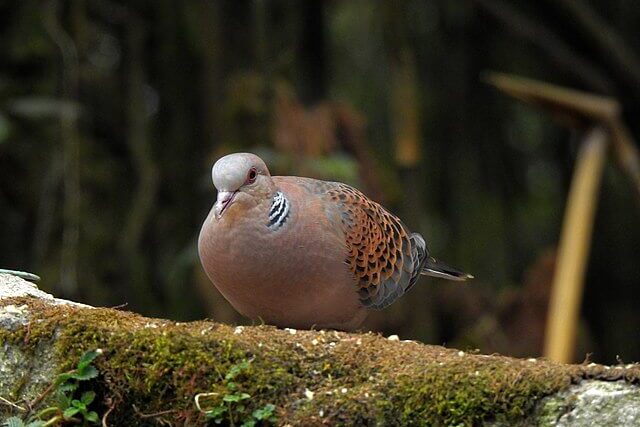
The United Kingdom is grappling with a relentless crisis of declining biodiversity as the numbers of its most cherished animals and plants continue to dwindle, with one in six at risk of extinction.
Despite efforts to address this issue, the loss of nature is outpacing investment and conservation endeavours, according to a comprehensive State of Nature report produced by over 60 organisations, including wildlife conservation groups, government agencies, and academics. The report reveals that 16% of the 10,000 assessed species of mammals, plants, insects, birds, and amphibians are facing threats, including iconic species like the turtle dove and hazel dormouse.
This disheartening picture emerges from decades of research that consistently demonstrates a decline in the abundance and distribution of UK wildlife.
Nida al-Fulaij, from the People’s Trust for Endangered Species, told BBC News: “The main takeaways from this report are alarming.”
“Where we can, we count species year after year,” Ms Fulaij said.
“Another way to measure how a plant or animal is faring is to repeatedly examine a site and ask, ‘Is the species here or not?'”
Since the 1970s, the abundance of monitored plants and animals has decreased by an average of 19%, underscoring a grim outlook for the country’s native wildlife.
“We need to move far faster as a society towards nature-friendly land and sea use,” Ms Speight said.
“Otherwise, the UK’s nature and wider environment will continue to decline and degrade, with huge implications for our own way of life.”
The report’s findings emphasise the urgent need for action to protect the UK’s biodiversity and the vital role it plays in mitigating the climate crisis. While the government has expressed its commitment to safeguarding 30% of the land for nature by 2030 and has allocated funds for initiatives such as the Species Survival Fund and woodland and peatland restoration, conservation organisations argue that more significant investments and a transition to wildlife-friendly farming and fishing practices are imperative.
“At the start of this year, I published our comprehensive Environmental Improvement Plan,” Environment Secretary Therese Coffey said, “setting out how we will create and restore at least 500,000 hectares [2,000 sq miles] of new wildlife habitats.”
But RSPB conservation-science head Prof Richard Gregory said: “We’d need more to achieve the goal of 30 by 30.
“The task ahead of us to recover nature in the UK is large and complex – we are really talking of billions of pounds and not millions to change systems and tackle the drives of decline.
“That investment would return a huge amount for society in time and save huge future costs if we allow the environment to continue to decline and degrade.”
The situation is especially dire for the 1,500 native UK species of plants and animals that are currently on the brink of extinction. Furthermore, essential habitats like woodlands, wetlands, and wildflower meadows are in poor condition. Only about 11% of UK land falls within protected areas, with many of them lacking effective management for nature and wildlife. Additionally, the seafloor surrounding the UK faces severe damage from fishing gear, leading to a lack of “good condition” in these marine ecosystems.
In the face of these challenges, there are examples of successful targeted conservation efforts that have had a positive impact on habitats and species protection. For instance, the number of species in a marine protected area in Lyme Bay, Devon, has increased significantly since the ban on trawling in 2008.
In the Cairngorms in the Highlands, 600 square kilometre of land have been restored to support woodland-dependent wildlife. The RSPB’s Hope Farm in Cambridgeshire has served as a research and demonstration site, demonstrating that crop yields can increase alongside bird numbers.
Efforts by individuals, organisations, and volunteers are commendable, but they highlight the need for funded work to make a more substantial and systemic impact. In the North Pennines, for example, farmers Nic and Paul Renison have transformed their farming practices to create more space for nature, planting wildlife-friendly hedgerows and fostering diverse wildlife populations.
“The idea is that it’s like the buffalo on the plains – they move every day, then the pasture gets 60 days to recover,” Nic said.
“The more you do, the more nature you attract – it gets addictive,” Paul said.
In a country where approximately 70% of land is used for farming, the transition to nature-friendly farming practices can not only benefit the environment but also boost agricultural productivity. Studies have shown that dedicating land to wildlife habitat can increase crop yields by enhancing pollinator abundance.
Report author and University of Sussex environmental-biology professor Fiona Matthews said: “We need a lot more investment [in nature].
“There is a belief in government that things can just magically happen for free.”
But while she acknowledged the great work from thousands of volunteers, funded work was needed too.
“I often see a press release for £1m for this or that – but it is a drop in the ocean for what is actually required to tackle this issue,” Prof Matthews said.
——————————————————————————
At Natural World Fund, we are passionate about stopping the decline in our wildlife.
The decline in our wildlife is shocking and frightening. Without much more support, many of the animals we know and love will continue in their decline towards extinction.
When you help to restore a patch of degraded land through rewilding to forests, meadows, or wetlands, you have a massive impact on the biodiversity at a local level. You give animals a home and food that they otherwise would not have had, and it has a positive snowball effect on the food chain.
We are convinced that this is much better for the UK than growing lots of fast-growing coniferous trees, solely to remove carbon, that don’t actually help our animals to thrive.
This is why we stand for restoring nature in the UK through responsible rewilding. For us, it is the right thing to do. Let’s do what’s right for nature!
Donate today at https://naturalworldfund.com/ and join in the solution!

